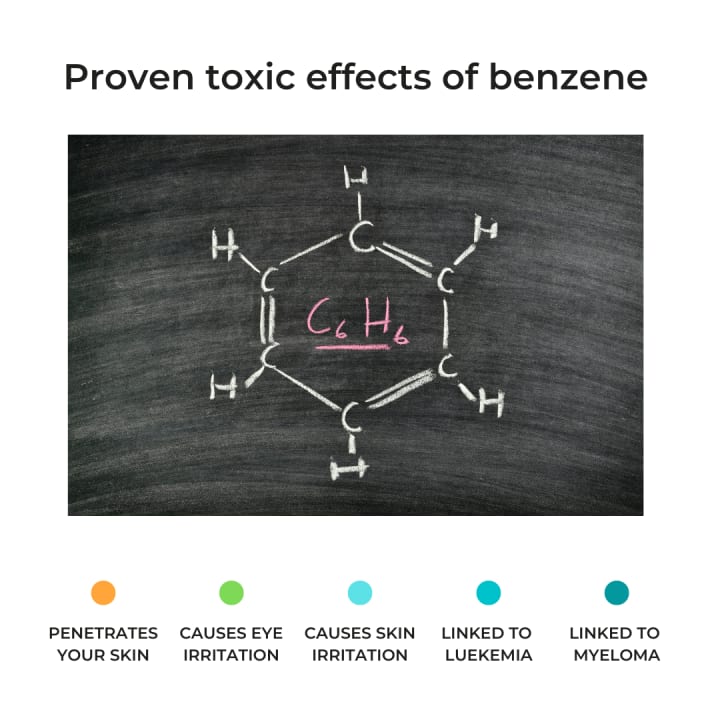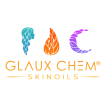Is Your Favorite Sunscreen Really Safe to Wear for Summer?
With all the sunscreen recalls, do you really know which product is safe to buy?

Summer, summer, summertime!
Soaking up the warm summer sun while tubing the river. Barbeques and beer pong with your friends at countless pool parties. Surfing the ocean waves and playing beach volleyball.
Yes, summer is a time for fun in the sun, not a time for worries. Like you shouldn’t have to worry if the sunscreen you use is actually full of cancer-causing chemicals.
If you’ve kept up with the news over the last year, then you’re probably aware of all the recalls around sunscreens, aka our LEAST FAVORITE type of suncare product! We’ll get into these reasons a bit later.
The product recalls happened because testing labs found unsafe levels of a toxic compound called benzene up to 3 times higher than the 2 ppm level mandated by the FDA.
This finding is a major red flag for some major reasons: benzene can (i) penetrate your skin, (ii) mess up your skin’s barrier, and most importantly, (iii) cause leukemia.
Here’s everything you need to know about benzene, why we recommend using sunblock instead of sunscreen and the steps you can take to choose a "safer" suncare product.
What is benzene?
Benzene is a volatile organic compound known in chemistry as an aromatic hydrocarbon, where hydro = hydrogen and carbon = carbon.
The sources of benzene come from human production and nature:
- In the chemical industry, benzene is used to make plastics, lubricants, drugs, and lots of other materials.
- In nature, benzene is made as a byproduct of volcano eruptions and forest fires.

Is benzene a safe chemical?
Now you’d think with all the benzene we use to make things, it would have some degree of safety. But that thought couldn’t be further from the truth.
Spoiler alert — there are hundreds of journal publications detailing the detrimental effects of benzene exposure.
A top hit on a Google search for ‘benzene toxicity’ links a page from the CDC about how long-term exposure damages your bone marrow and red blood cells. Hence the link to leukemia.
Another reputable source about benzene toxicity comes from the Material Safety Data Sheet (MSDS), a document required by OSHA to handle chemicals. A short skim through the MSDS sheet for benzene shows cringeworthy words like:
- DANGER!
- Eye & skin irritation
- Bone marrow & blood cell injury
- Central nervous system depression
- Adverse reproductive and fetal effects
So you can see why wearing sunscreen contaminated with benzene is a bad health move. The whole point of wearing sun protection is to prevent cancer, not cause it.

How did benzene end up in sunscreen when it’s not part of the original formula?
The answer is nobody really knows because surprise surprise, the companies with the recalled products have yet to publish a clear statement on the source of benzene.
But that’s pretty on-brand for them, toxic and untrustworthy.
The only data source we can rely on is the consumer reports, which suggest the benzene came from contamination. Whether the contamination happened from impure raw materials or dirty production lines is remains a mystery.
As someone who’s worked in medical device manufacturing, the undetected benzene contamination raises some concerns about their manufacturing and quality control processes.
The good news is you can reduce your risk of purchasing sun protection products free of harmful chemicals.
And it all starts by knowing the difference between sunscreen and sunblock.
What you need to know about sunscreen vs. sunblock.
Sunscreen and sunblock are not the same. Yes, these products both provide sun protection. But they work in entirely different ways due to the type of active ingredients.
Sunscreen
- Works by absorbing UV rays as they hit your skin, preventing penetration
- Has toxic chemical-based active ingredients like oxybenzone and avobenzone
- Active chemicals are toxic to us and the coral reefs
Sunblock
- Works by forming a reflective shield on your skin, blocking UV rays from hitting your skin
- Has friendly mineral-based active ingredients like zinc dioxide and titanium dioxide
- Are *generally safer for us and the coral reefs

Which is the better pick, sunscreen or sunblock?
Based on the active ingredients alone, you should opt for wearing sunblock instead of sunscreen.
The main reason is the carbon-based actives in sunscreen, like oxybenzone, come from toxic benzene derivatives and violate our cardinal skincare rule: Don’t use products with ingredients with the letters B-E-N-Z!
Chemicals like avobenzone are “fatty” and love other “fatty” things like our skin and have a greater chance of absorbing into the deeper layers of your skin.
On the other hand, sunblock is safer to use as the active ingredients like zinc oxide and titanium dioxide are natural minerals and not artificially produced from benzene.
And unlike sunscreen, the minerals in sunblock can’t penetrate your skin.
So that’s why sunblock is the better choice for sun protection, with one caveat … *make sure to read the labels and check to see if the “inactive” formula ingredients are free of the gross B-E-N-Z chemicals too.
Where can you find a safe, non-toxic sunblock?
Your local health food store like Sprouts or Whole Foods should have a few good options. But if you’re looking for a product recommendation, we’ve got you covered.
Our number one choice of sunblock brand is All Good. Their products are lightweight, non-greasy and free of anything with benzene.
Give them a try, and let us know what you think in the comments.
Bonus tip: Other friendly suncare products
There’s a few more things you need to know about caring for your skin in the sun.
Sunblock does cut out a majority of the damage from UV rays. But should you forget to reapply and end up with sun-kissed skin, you need to have a plan as the damage to your skin keeps happening for hours even after you get out of the sun.
One way to fight the after sun damage is by applying products rich in omega fats, vitamin E and chlorophyll to help lock in water and cancel out the free radicals.
Hemp-based skinoils — like GLAUX CHEM® Face & Body Moisturizing Oil — are packed with these antioxidant compounds and may reduce after-sun damage.
You can also apply our skinoil 10-15 minutes before applying sunblock. Because double the protection never hurts.
And hemp seed oil has some amount of protection against UVB and UVC rays, so there is some science to back us up!
About the author
Dr. Kimberly M. Lincoln is the founder of GLAUX CHEM® and holds a Ph.D. in bioinorganic chemistry and a B.S. in chemistry, with professional experience in chemical synthesis and medical device manufacturing. She is passionate about living a clean lifestyle and keeping the planet healthy for our future generations. Kimberly loves pit bulls, cooking, cycling, attending rock concerts, and creating new hemp skincare products.

About the Creator
GLAUX CHEM®
Our mission is to help those with skincare needs by developing natural products that are inspired by Mother Nature. Learn more at https://www.glauxchem.com.






Comments
There are no comments for this story
Be the first to respond and start the conversation.